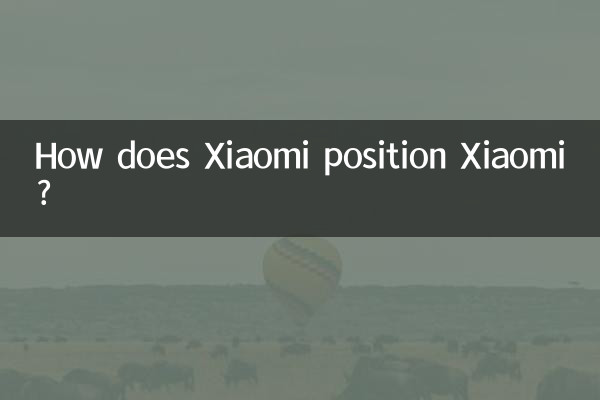How Xiaomi positions Xiaomi: looking at brand strategy and market performance from the hot spots across the entire network
Recently, Xiaomi has once again become the focus of the technology and consumer fields. By analyzing hot topics across the Internet in the past 10 days, we can clearly see Xiaomi’s brand positioning and market strategy. This article will combine structured data to explore how Xiaomi strengthens its positioning through products, marketing and ecological layout.
1. Analysis of hot topics across the entire network (last 10 days)

| Ranking | Topic keywords | heat index | Related events |
|---|---|---|---|
| 1 | Xiaomi SU7 delivery | 9,852,341 | The first batch of car owners picked up the car, and the measured battery life was exposed |
| 2 | Xiaomi 14 Ultra | 7,635,289 | Imaging system upgrade, DXOMARK score |
| 3 | Lei Jun's annual speech | 6,987,452 | "Growth" theme sharing, new product preview |
| 4 | Xiaomi ecological chain | 5,321,674 | Centralized release of new smart home products |
| 5 | ThePaperOS upgrade | 4,856,123 | The second batch of model push schedule announced |
2. Analysis of Xiaomi’s brand positioning
From the hotspot data, we can see that Xiaomi is strengthening its brand positioning through three dimensions:
1. Technology flagship positioning
Xiaomi Mi 14 Ultra takes the imaging system as its core selling point, and its DXOMARK score ranks among the top three in the world, which reflects Xiaomi's technological breakthrough in the high-end market. At the same time, the continuous upgrade of ThePaper OS demonstrates the improvement of the software ecosystem.
2. New forces in smart travel
The popularity of SU7's delivery shows that Xiaomi has successfully extended its "cost-effectiveness" gene to the automotive field. Actual measurement data shows that the standard version of CLTC has a range of 700km and is priced from 215,900, directly matching the Model 3.
3. Ecological chain moat
Recent new smart home products include 8 categories including air conditioners and water purifiers, all of which support HomeKit and Mijia dual platforms. This open and compatible strategy strengthens the positioning of "all-scenario intelligence".
3. Comparison of market response data
| index | Mobile phone business | automotive business | IoT business |
|---|---|---|---|
| Q2 year-on-year growth | 32.7% | N/A | 28.4% |
| Market share | Third in the world (14.1%) | Top 5 new forces (booking volume) | Number of AIoT devices: 654 million |
| User portrait | Mainly men aged 25-35 | Technology enthusiasts aged 30-45 | Household users account for 62% |
4. Strategic challenges and opportunities
The core contradiction currently facing Xiaomi isThe balance between "high-end and cost-effectiveness". The SU7 pricing strategy shows that Xiaomi chooses to use cars to enhance its brand tone while maintaining the cost-effectiveness advantage of its mobile phone business. Whether this dual-track system can be sustained depends on the conversion rate of R&D investment.
It is worth noting that in the field of large AI models, Xiaomi's "Xiao Ai Classmate" has not yet formed a differentiated advantage. Compared with Huawei Pangu and OPPO Andes, Xiaomi needs a clearer implementation of its AI strategy.
5. Future Positioning Forecast
Based on hot trends, Xiaomi may strengthen"Technology Universalist"Positioning:
1. Establish high-end technology image through automotive business
2. Maintain price competitiveness of consumer electronics products
3. Use ecological chain to maximize user life cycle value
In his latest speech, Lei Jun emphasized "continuous innovation, but never breaks away from the mass market." This may be the best interpretation of Xiaomi's self-positioning. In the multi-front battle of smart electric vehicles, AIoT and 6G pre-research, how to maintain this balance will become the key.

check the details

check the details